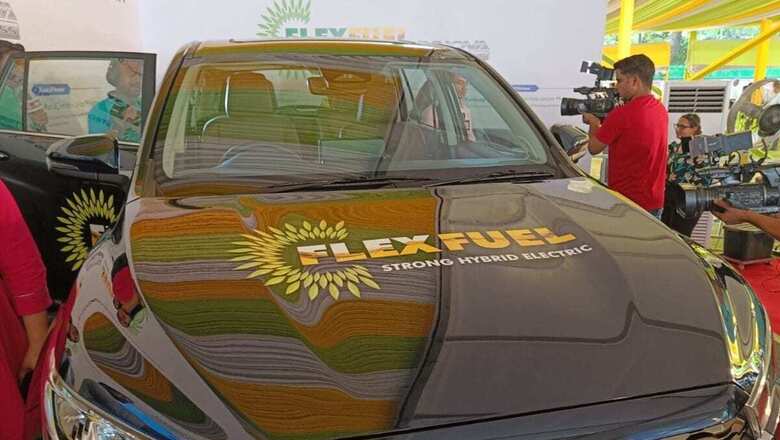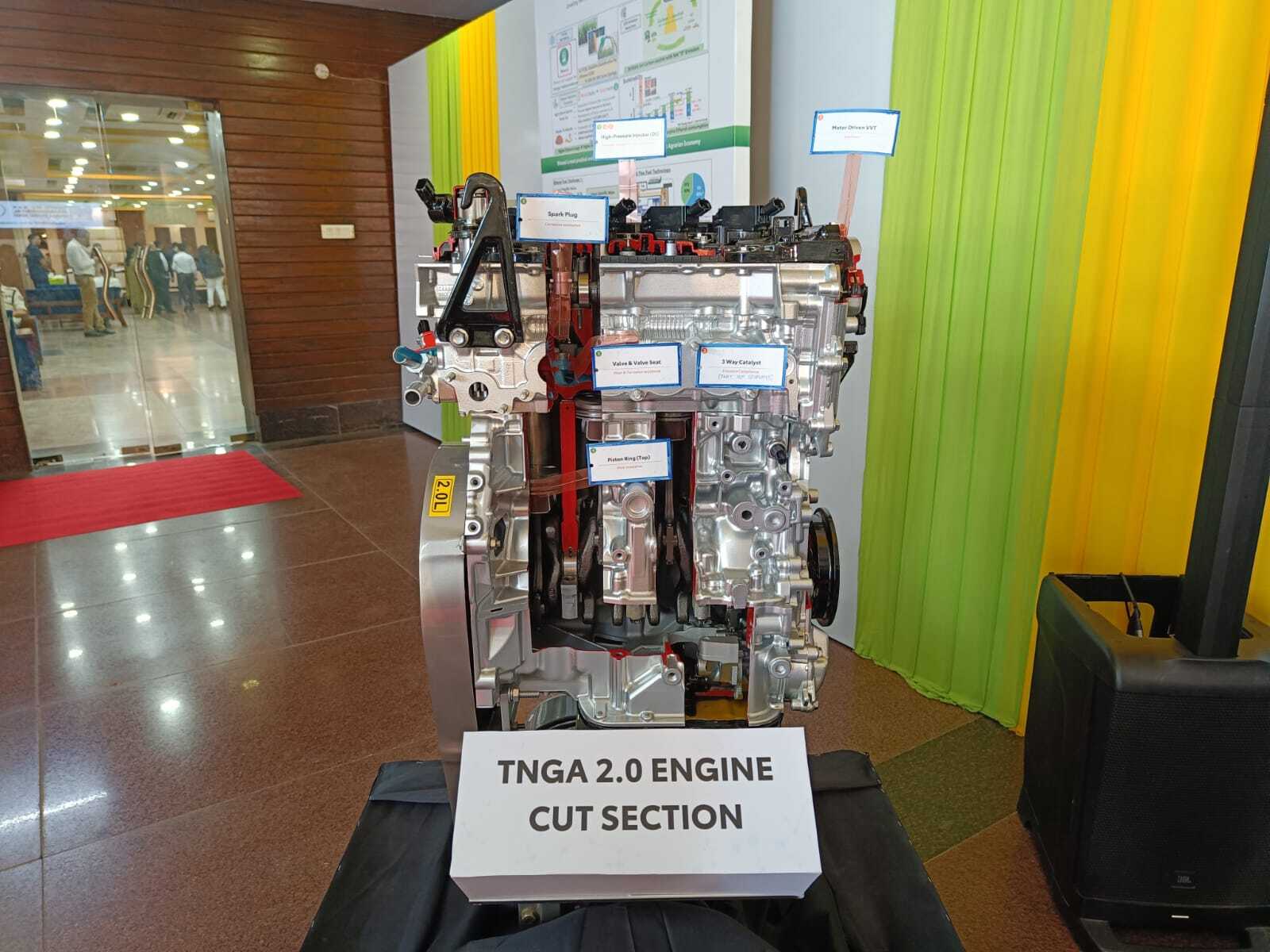
views
It can charge itself while on the road and run on 85 percent ethanol – the world’s first electric flex fuel vehicle was launched on Tuesday by Toyota India. Union road transport minister Nitin Gadkari unveiled the Bharat Stage 6 Phase II prototype saying with these technologies, ethanol pumps will soon come up across India.
The prototype is built on Toyota’s Innova HyCross platform and may take some months before it goes into mass production. Without sharing the timelines, a spokesperson told News18 that the company was aiming to bring the car on the road “as soon as possible”.
According to the spokesperson, the car will be self-charging and can run on 85 percent ethanol and 15 percent petrol. In India, the ethanol mix in petrol is 11.5 percent as of March 2023. Even with this share, it has managed to cut the oil import bill by Rs 41,500 crore. Now, work is on for E20 (20 percent ethanol blend in petrol).
What is a flex fuel vehicle?
The prototype is designed to be compatible with India’s higher emission norms, making it the world’s first Bharat Stage 6 Phase II electrified flex fuel vehicle, as per Toyota’s official statement.
A flex fuel vehicle, also called flexible-fuel or dual-fuel vehicle, is an alternative fuel vehicle with an internal combustion engine designed to run on more than one fuel. The next step for the prototype includes finer calibration, homologation and certification, the statement read.

“This signifies a pivotal moment in the Indian auto industry’s journey toward a greener and more self-reliant future. The electrified flex fuel vehicle offers the promise of being the most impactful and fastest pathway to bolster energy security by rapidly displacing petrol usage in vehicles at large scale,” it added.
With two powertrains – electric and flex fuel engine – the vehicle helps in the shift from internal combustion engine technology to flex fuel engines. It further enables the creation of a new manufacturing ecosystem for electrified powertrain parts, which are common to battery electric vehicles (BEV), thereby providing a disruption free and smooth energy transition.
Unveiling the prototype, Gadkari said ethanol being an indigenous, clean and renewable fuel holds a promising future for India. “The (central) government’s focus on ethanol is for achieving energy self-reliance, spurring the incomes for farmers and having a better impact on the environment. The government’s plan is not only to diversify agriculture surpluses toward the energy sector but also generate wealth from waste using 2G technology for producing ethanol from biowaste,” he said.
The union minister said there was a lot of emphasis on building and expanding required infrastructure to produce ethanol. “It is indeed commendable to see that Toyota is making strong efforts for transitioning to cleaner energy options and for environment conservation with its multiple advanced technological capabilities like hydrogen vehicle, electrified flex fuel vehicle and more,” he added.
India’s ethanol potential
India is the fastest growing large economy and its fossil fuel consumption along with crude oil import is also rising rapidly. Due to a large increase in mobility needs, the transport sector, which currently accounts for about 50 percent of the oil demand, will be the most significant contributor to this.
Toyota further said as per estimates, the transport sector’s energy consumption in India is expected to double to 200 MTOE (million tonnes of oil equivalent) in 2030.
India is well endowed with renewable energy, surplus sugar, food grains and biomass that offer possibilities for a transition to a cleaner energy future, which is also indigenous. Abundant sugarcane, food grains along with massive biomass waste can be used to produce ethanol, which can be a substitute for a significant amount of petrol used by vehicles in the shortest possible time.
With the impending implementation of E20 (20 percent ethanol blend in petrol) by April 2025, India is expected to save Rs 30,000 crore annually in its oil import bill. E20 fuel will also reduce PM2.5 emissions by up to 14 percent as compared to petrol.
Besides ethanol from sugarcane and food grains, India also has massive potential for ethanol production using plant waste or residue like ‘parali’ by using 2G technology, which is otherwise burnt causing widespread pollution in northern parts of India.
“This has already started and can help derive economic value from waste and generate greater wealth for the agrarian economy, supporting the government’s vision, where farmers will not just be ‘annadatas’ but also become ‘urjadatas’ with vehicles powered by ethanol produced by proud farmers,” Toyota said.




















Comments
0 comment